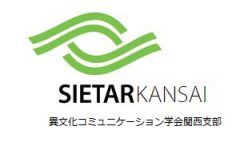Presenter: Prof. Adam Acar (Kobe City University of Foreign Studies)
Date: Sunday, April 22, 2012 (2:00pm~4:00pm)
Place: Nishinomiya Daigaku Koryu Center (ACTA East Tower 6F,
Seminar Rm2),
2 minutes walk from Hankyu Nishinomiya Kitaguchi Station.
http://www.nishi.or.jp/~daigaku/info/index.html,
Tel.(0798)69-3 155
Fee: 500 yen for members and students, 1,000 yen for non-members
Language: English
Description of the presentation
When compared with Westerners, Japanese tend to have a higher fear of negative
evaluation and low levels of online self-disclosure. However, currently there isn’t
enough information about online social network services like Twitter, Facebook and
Mixi in Japan. To close this important gap and better understand how Japanese
online behavior impacts the adoption of online social network services, we have
been conducting several studies for more than a year. In the course of this
presentation I’d like to share the findings and explain the similarities and
differences between the both sides of Pacific.
Questions answered in the presentation:
1- What do Japanese users think of Facebook?
2- Why is Twitter so popular in Japan?
3- Do Japanese and Americans use social media in the same way?
4- What are the differences between Americans and the Japanese when it comes to Twitter usage?
5- What are the differences between American and Japanese companies in terms of social media use for marketing?
6- How do Japanese Twitter users utilize this service to learn languages?
7- How did the people in Northern Japan use social media after the Tohoku earthquake?
8- What do Japanese people think of Google
Profile of the presenter
Associate Professor of Communication at Kobe City University of Foreign
Studies. Before joining KCUFS, Adam Acar worked as a brand equity consultant for several global brands operating in Japan and part-time lectured in marketing strategy at the International University of Japan. He started researching about digital marketing in 2004 and wrote about online social networks as early as 2006. He is the author of several social-network related papers including “the antecedents of social networking behavior” and “Twitter usage during the Great Tohoku earthquake.” His current goal is to do as much research as possible to learn more about the adoption of new technologies both in Japan and all over the world. He is hoping to contribute to the science and society by describing the dynamics of the mass adoption of innovations, especially new communication tools.
